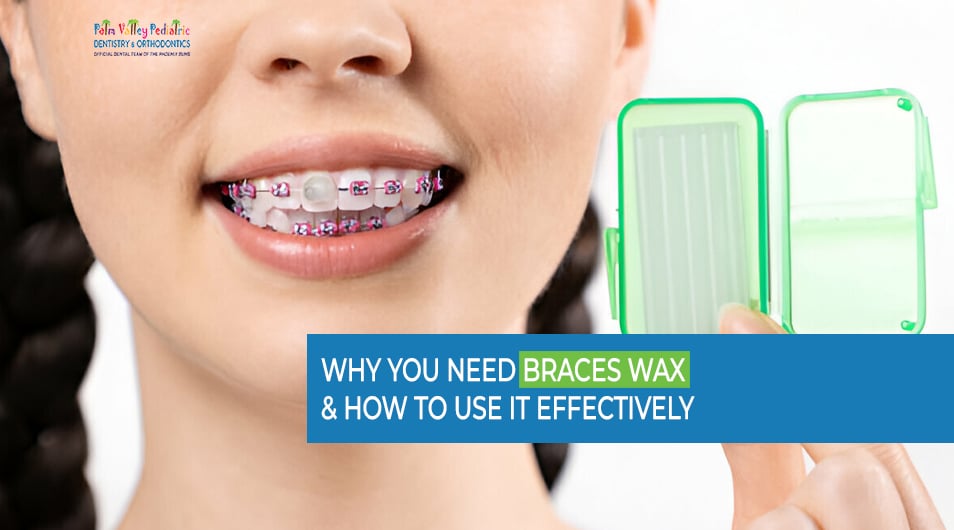How To Use Wax On Braces? Easy Comfort Tips

Orthodontic braces can be a game-changer for achieving a straight and healthy smile, but they can also come with some discomfort, especially during the initial adjustment period. One of the most effective ways to alleviate irritation and discomfort caused by braces is by using wax. In this article, we’ll delve into the world of orthodontic wax, exploring how to use it, its benefits, and providing easy comfort tips to make your braces-wearing journey as smooth as possible.
Understanding Orthodontic Wax
Orthodontic wax, often referred to as dental wax or braces wax, is a type of wax specifically designed for use with orthodontic appliances. It is typically made from a non-toxic, hypoallergenic material that is safe for use inside the mouth. The wax is used to cover sharp edges or points on the braces that can cause irritation to the lips, cheeks, or tongue. By applying a small amount of wax to the offending area, you can instantly reduce discomfort and prevent further irritation.
How to Apply Wax on Braces
Applying wax to your braces is a straightforward process that can be mastered with a bit of practice. Here’s a step-by-step guide:
- Wash Your Hands: Before touching the wax or your mouth, make sure your hands are clean to prevent any potential infection.
- Dry the Area: Use a cotton ball or a soft cloth to gently dry the area around the bracket or wire that’s causing discomfort. This helps the wax adhere better.
- Take a Small Amount of Wax: Pinch off a small piece of wax. The amount should be just enough to cover the irritation-causing area without being too bulky.
- Shape the Wax: Use your fingers to mold the wax into a small ball or a shape that fits the area you’re trying to cover.
- Apply the Wax: Press the shaped wax onto the bracket, wire, or any part of your braces that’s causing irritation. Make sure it’s securely attached and not likely to fall off easily.
- Check and Adjust: Run your tongue or finger over the area to ensure the wax is in place and not causing any additional discomfort. If needed, adjust the wax’s position or add a bit more.
Easy Comfort Tips for Braces Wearers
While wax can provide significant relief from discomfort caused by braces, there are several other comfort tips that can enhance your orthodontic journey:
- Soft Food Diet: Initially, it might be helpful to stick to a soft food diet to avoid putting too much pressure on your teeth and braces.
- Oral Hygiene: Keeping your teeth and braces clean is crucial. Use a soft-bristled toothbrush and fluoride toothpaste, and consider using a waterpik for thorough cleaning.
- Regular Orthodontic Visits: Attending your scheduled orthodontic appointments is vital for adjustments and to address any issues promptly.
- Lip Balm: Applying lip balm can help protect your lips from dryness and irritation, especially if you find that your braces are causing your lips to dry out.
- Mouthguard: If you’re active in sports, wearing a mouthguard can protect your braces and teeth from damage.
The Importance of Regular Orthodontic Care
Maintaining regular appointments with your orthodontist is not just about making adjustments to your braces but also about ensuring that your treatment is progressing as planned. Your orthodontist can identify and address any potential issues early on, reducing the risk of complications and ensuring that your treatment stays on track.
Future Trends in Orthodontic Comfort
The field of orthodontics is continually evolving, with advancements in technology aimed at making orthodontic treatments more comfortable and efficient. From improved materials for braces to innovative approaches like clear aligners, the future of orthodontic care looks promising. It’s essential to stay informed about the latest developments and discuss with your orthodontist how these advancements might benefit your specific situation.
FAQ Section
How often should I replace the wax on my braces?
+The wax on your braces should be replaced every few days or whenever it starts to wear off. Regularly inspecting the wax and reapplying as needed can help maintain comfort and prevent irritation.
Can I eat with wax on my braces?
+While it's generally recommended to avoid eating with wax on your braces, if you must eat, stick to soft foods and try to chew on the opposite side of your mouth. However, for optimal comfort and to avoid swallowing the wax, it's best to remove it before meals and reapply afterward.
Is orthodontic wax safe for everyone?
+Orthodontic wax is made from non-toxic materials and is safe for use by most people. However, if you have specific allergies or sensitivities, it's always a good idea to consult with your orthodontist before using any new product in your mouth.
Conclusion
Wearing braces can be a significant undertaking, but with the right strategies and tools, it can also be a relatively comfortable and rewarding experience. By understanding how to use orthodontic wax effectively and incorporating easy comfort tips into your daily routine, you can navigate the journey to a straighter, healthier smile with confidence. Remember, maintaining open communication with your orthodontist and staying informed about the latest in orthodontic care can make all the difference in achieving the best possible outcome from your treatment.


